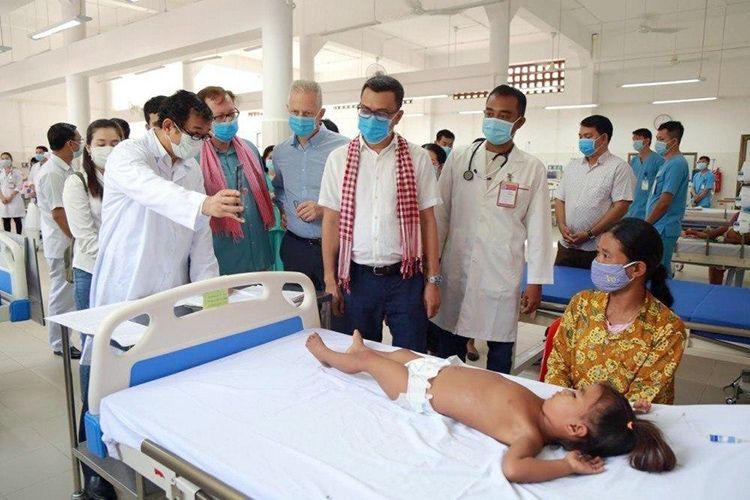China offers a helping hand to Sihanoukville sustainability
 2,800 solar bulbs, 200 solar panels, and 200 electric motorcycles will be used to equip schools and public places in Sihanoukville. Supplied
2,800 solar bulbs, 200 solar panels, and 200 electric motorcycles will be used to equip schools and public places in Sihanoukville. Supplied
The government of China has provided Sihanoukville with clean energy equipment to help the coastal city reduce its carbon footprint and become more sustainable.
The news comes less than a week after it was announced that another coal-fired power plant would soon be constructed in the area, one of three coal-fired plants Cambodia’s government has approved this year.
The equipment arrived at Sihanoukville International Port on Sunday. The delivery included 2,800 solar bulbs, 200 solar panels, and 200 electric motorcycles that will be used to equip schools and public places, according to the Ministry of Environment.
The donation was made as part of a memorandum of understanding (MoU) on cooperation in a low-carbon emissions pilot project in Preah Sihanouk province that was signed last year between the Ministry of Environment of Cambodia and the Ministry of Ecology and Environment of China.
The Ministry of Environment encouraged all stakeholders to participate in activities to raise environmental awareness and strengthen capacity to prevent and reduce climate change, as well as keeping the province clean and sustainable.
Sihanoukville has undergone rapid development in recent years and that has spawned a number of new infrastructure projects in the city.
Earlier this year Prime Minister Hun Sen announced that more than 5,000 smart lights would be installed to both iluminate the city and dramatically cut power costs upon the completion of a new $300 million road project.
Daniel Rye, engineering director of Canopy Power, a startup headquartered in Singapore that works on micro-grid projects including solar and battery energy storage, said: “I believe that the dominance of coal generation will be eroded by solar photovoltaics (PV) over the medium term and this will be driven largely by commercial factors. However, because solar output cannot be controlled, it can only provide a small proportion of grid demand on its own. Energy storage is the key to enabling solar energy to become dominant as a future power generator to the grid.”
Although the MoU between Cambodia and China is a step in the right direction, observers say that more work needs to be done to truly achieve a cleaner, more sustainable Cambodia.
According to EnergyLab’s analysis, if all announced energy projects go forward, in 2030 a total of 80 percent of Cambodia’s grid electricity will still be generated from fossil fuels, up from about 34 percent in 2018.
This future energy mixture would compromise Cambodia’s ability to achieve its Sustainable Development Goals and Nationally Determined Contributions under the UN Climate Agreement.
Observers say the Kingdom must reconsider and focus on renewables to keep up with other countries and play its part in taking care of the planet.
Tina Redshaw, British Ambassador to Cambodia, said: “Clean energy is not only good for the environment, for health and for reducing emissions. If things are done right, a cleaner more sustainable Cambodia could see accelerated economic development. Cambodia can remain competitive in global manufacturing and expand its eco-tourism sector by embracing renewable energy. At a time when global economies are facing huge challenges, renewable energy offers a ray of hope for new investment and development.”
Credited: Khmer Times






